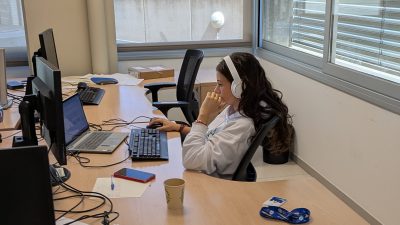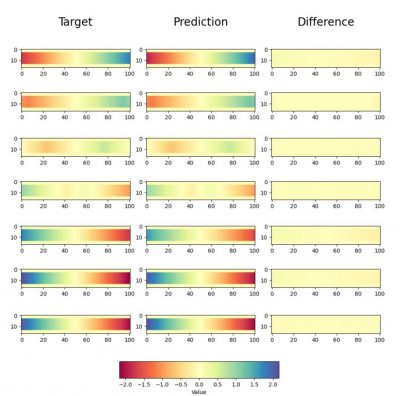
Hello! My name is Raquel Trull Báguena, an undergraduate student at UPC in Mathematics and Engineering Physics. For the last nine weeks, I have participated in the Barcelona Supercomputing Center (BSC) International Summer HPC Internship Programme within the Fusion group. They welcomed me with open arms, and I would like to share my experience of my work this summer.
I have been working under the mentorship of Alejandro Soba and Eduardo Cabrera, to whom I could not be more grateful. From the very first day, they made sure I was accompanied throughout this whole process, solving my every doubt and maintaining a fun environment.
About my work
My internship was centered around High-Temperature Superconductors, specifically generating an AI-accelerated solution to Maxwell’s equations for HTS. My work was a continuation of the thesis developed by Diego Bonato who, despite not being part of BSC at the moment, did not hesitate to help me whenever I needed it. Before diving into the specifics of the project, I cannot help but admire Diego’s thorough work and dedication.
During my first week, I became acquainted with Diego’s thesis and the basic physics behind the problem. The purpose of this project is to model the electromagnetic behavior of HTS using a Fourier Neural Operator (FNO). Additionally, I became familiar with MAGNET, a finite element solver developed at BSC, which was used to generate the dataset. As we were dealing with large amounts of data and computation, I had to use MareNostrum 5, which I found very exciting, as I had never been able to have access to such powerful resources.
The objective of my Internship was to redo the model, but with a few key differences. Among these differences were changing the physical model behind the problem and implementing a new logic for the data that trained the model. Furthermore, we changed the dataset creation methodology to avoid memory issues that had been pivotal before, allowing for a model that can be trained an indefinite number of times.
In order to perform these changes, I had to modify the files that Diego used, which were mostly written in Python and used PyTorch. One of the main issues I ran into was that the version I had of Diego’s files was not the latest one, which generated several problems.
The first thing I did was generate the dataset, using MAGNET, from which the model would be trained. That included a previous set of experiments to choose what parameters would define each simulation, executions of several hours, and the aftermath of postprocessing and preparing the dataset for training.
Once we had the dataset, we moved on to training. After changing the logic and conducting several experiments to choose the hyperparameters, we obtained our trained model. The following photograph shows the behavior of the model, comparing its prediction to the target results.

This phase was followed by another set of training, using a new dataset. After that, we fine-tuned the model and performed an autoregressive evaluation to assess the performance of the model when generating a simulation on its own.
This process was accompanied by several meetings to discuss how my work was progressing, which allowed me to make sure I was going down the right path. The experience allowed me to envision what a career in scientific research could look like, which I would love to pursue.
I would like to thank all the BSC staff who made this opportunity possible. Thank you to the Fusion Group for their warm welcome and, especially Alejandro and Eduardo for their continuous help, as well as Mervi. I could not have asked for a better stay!
